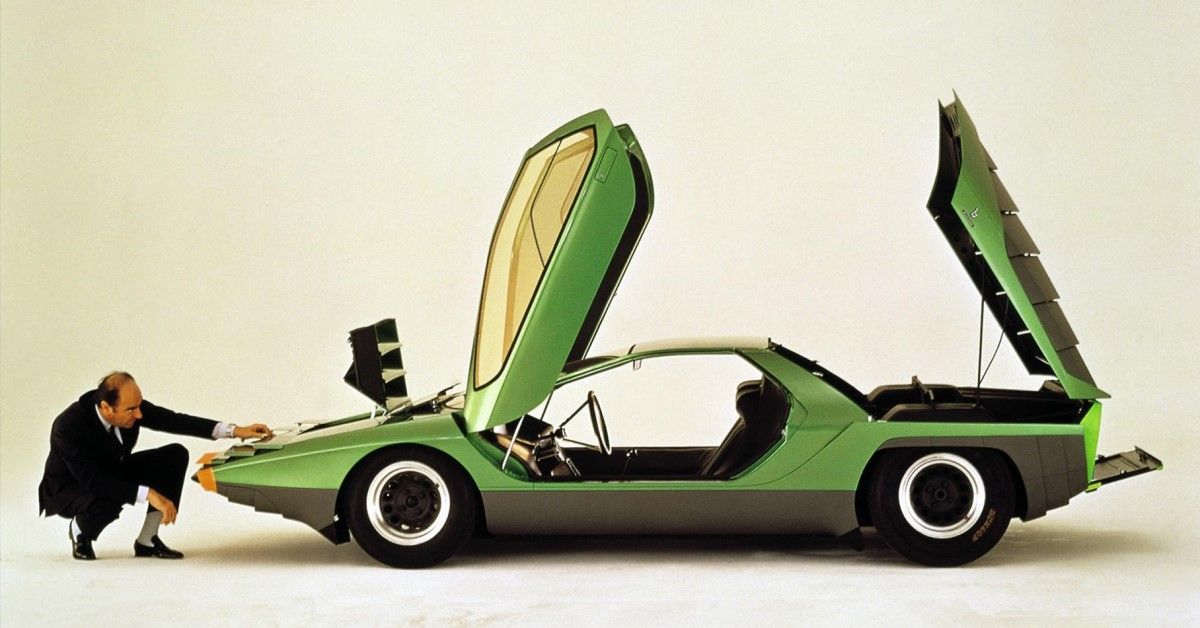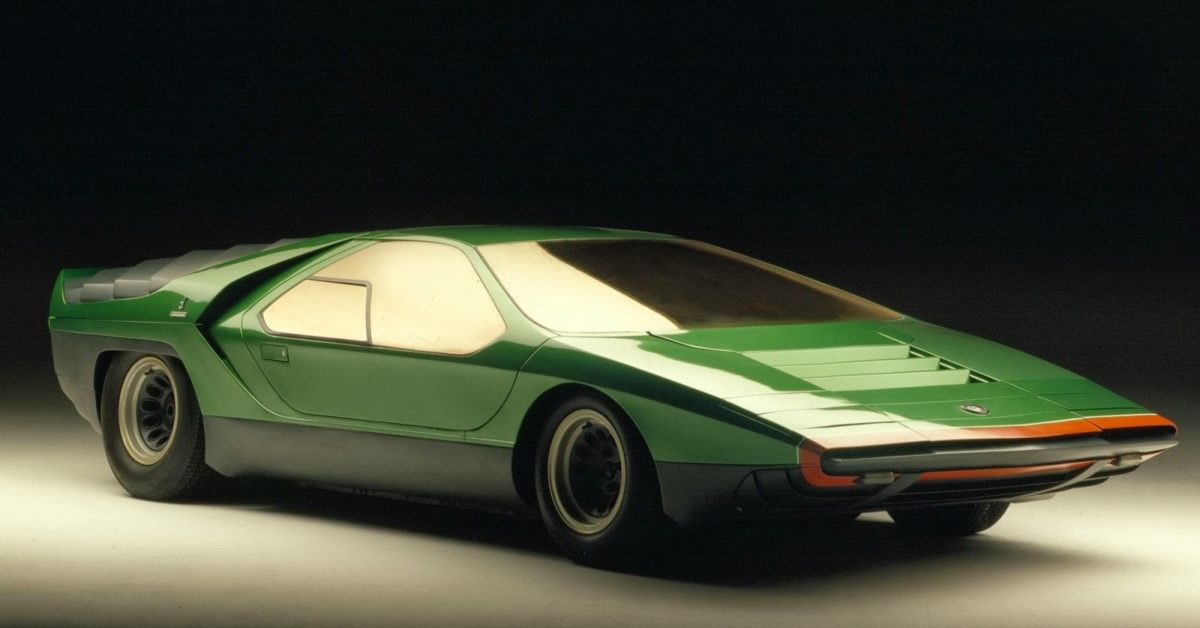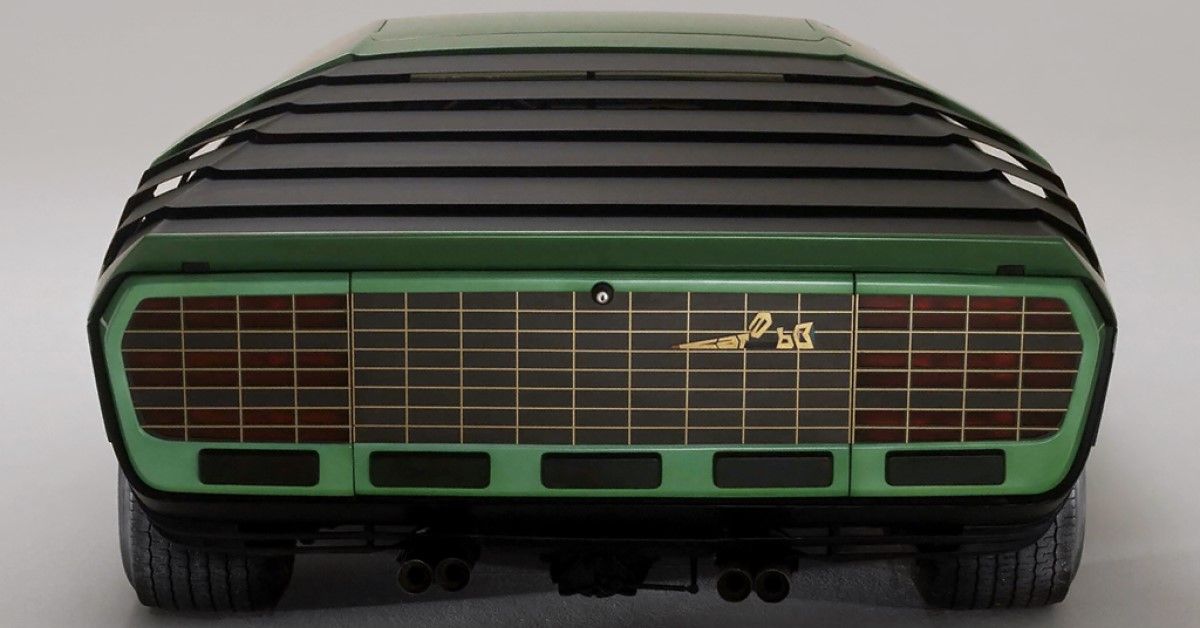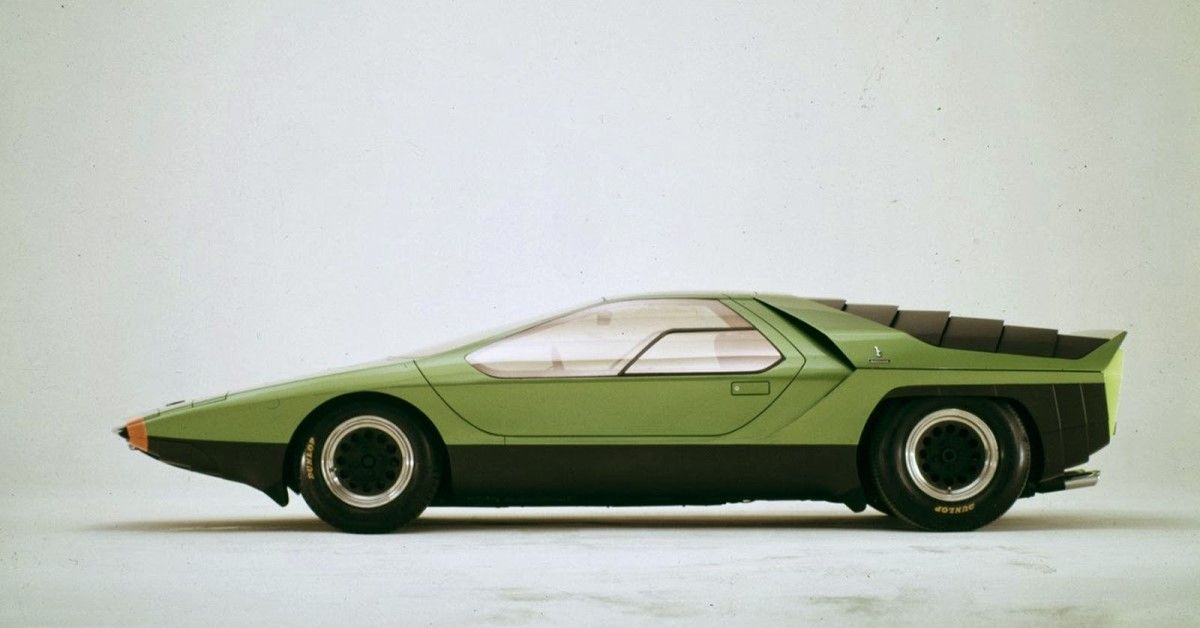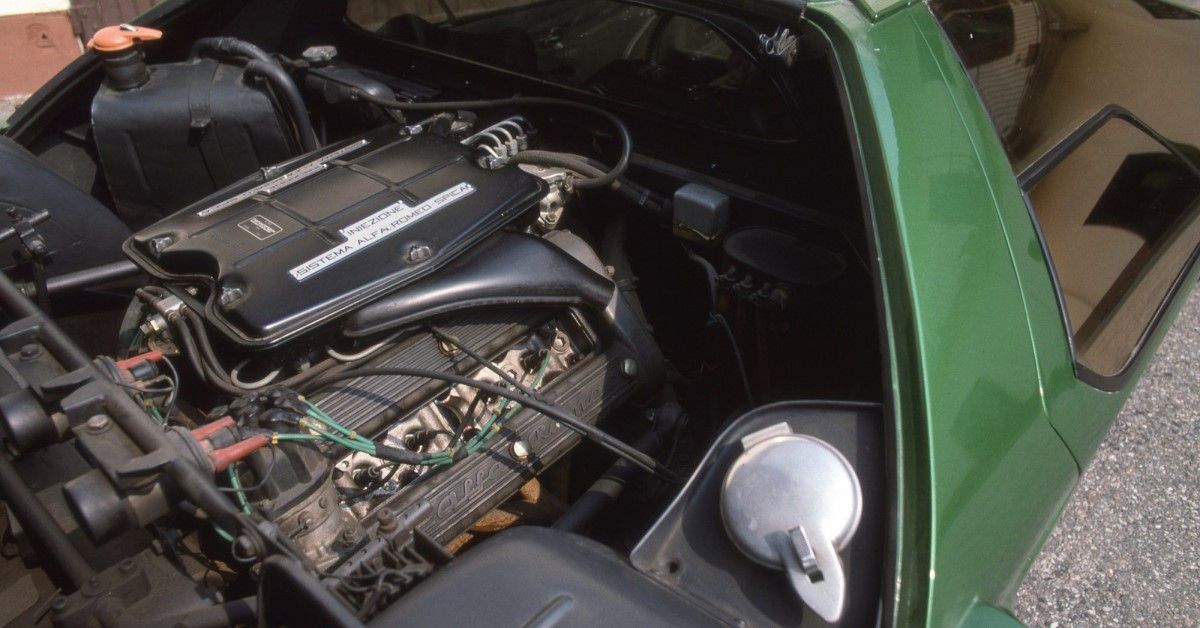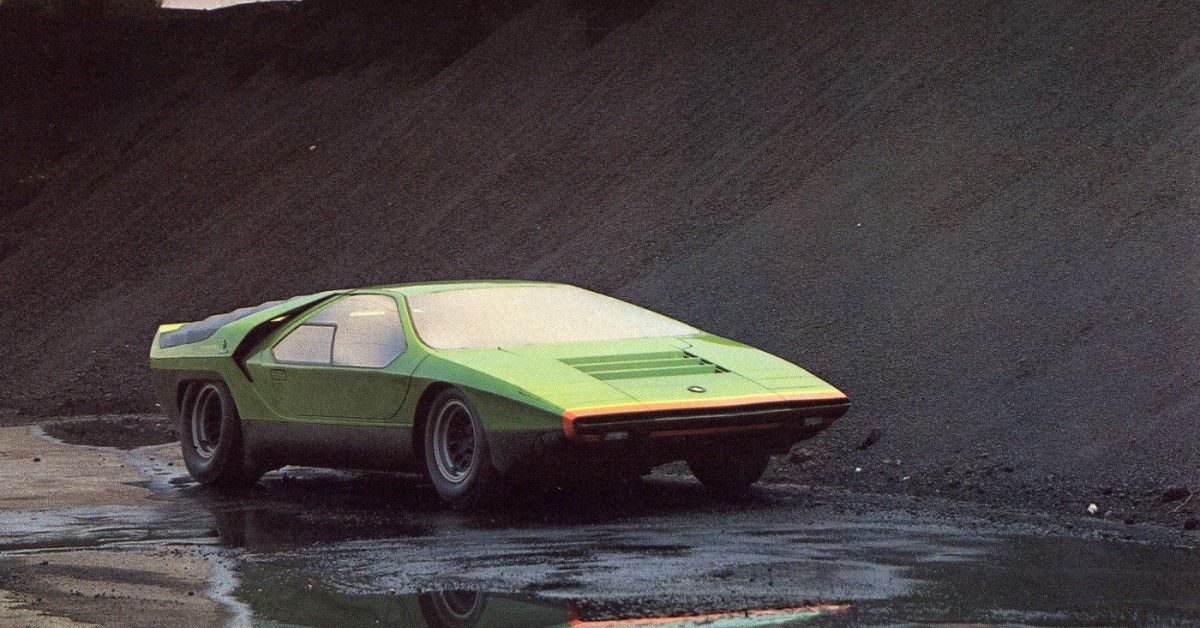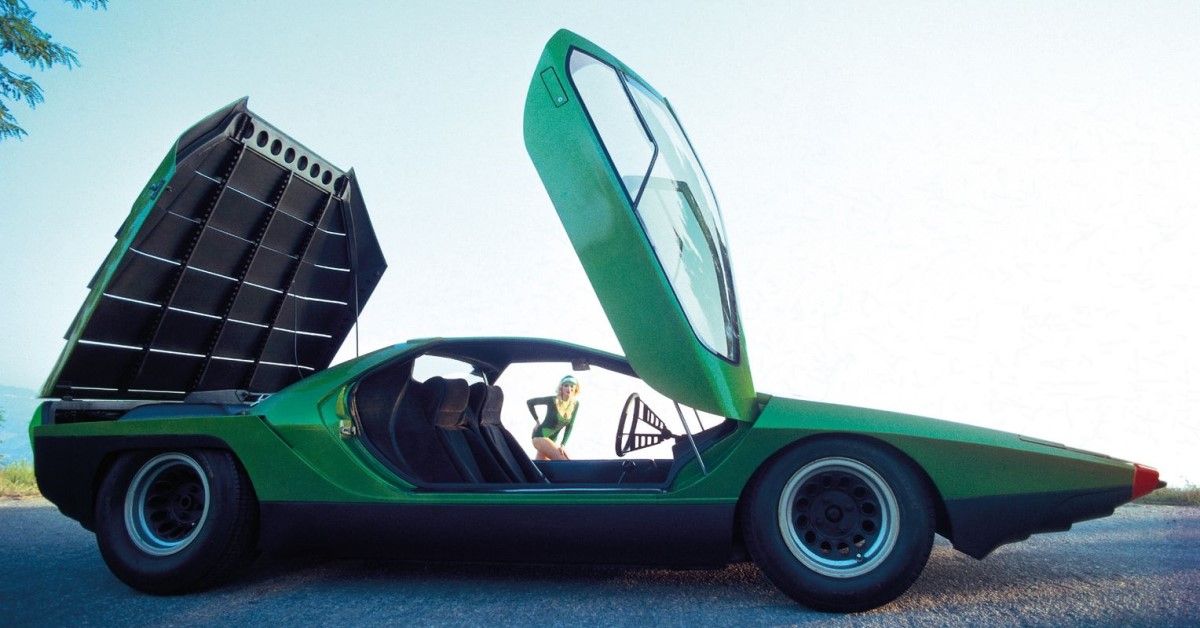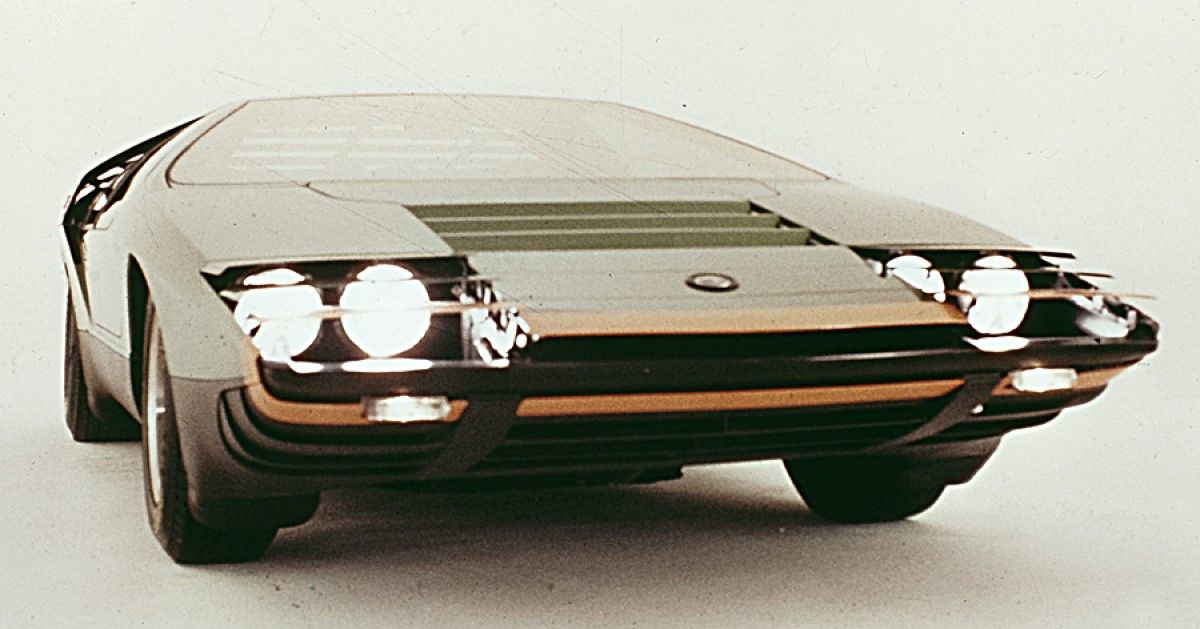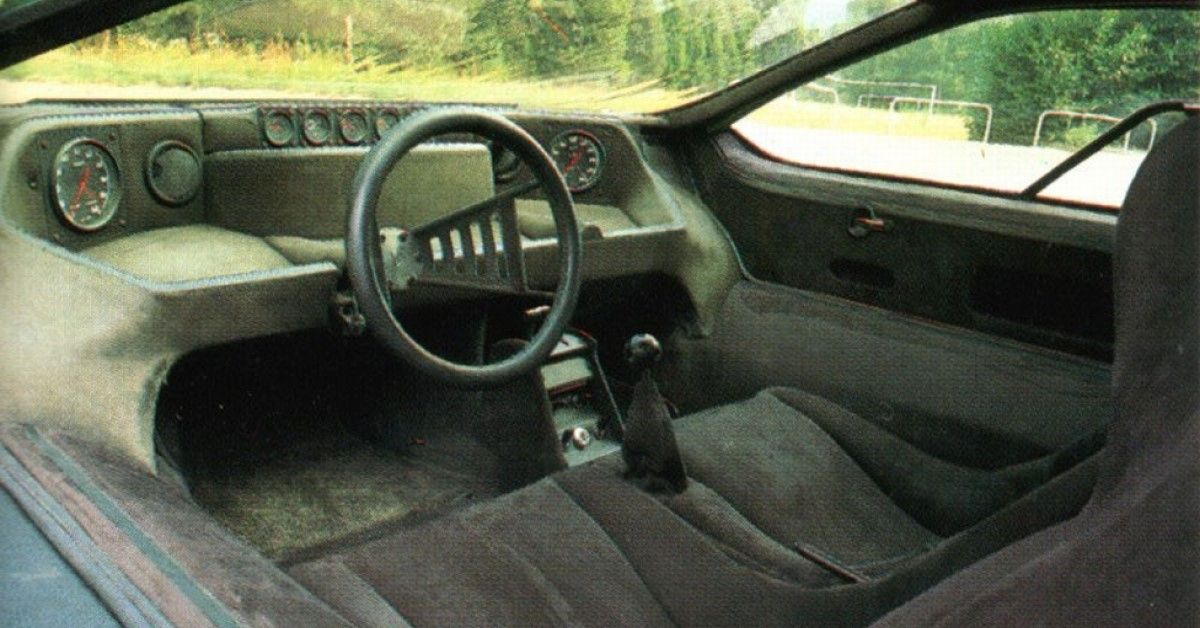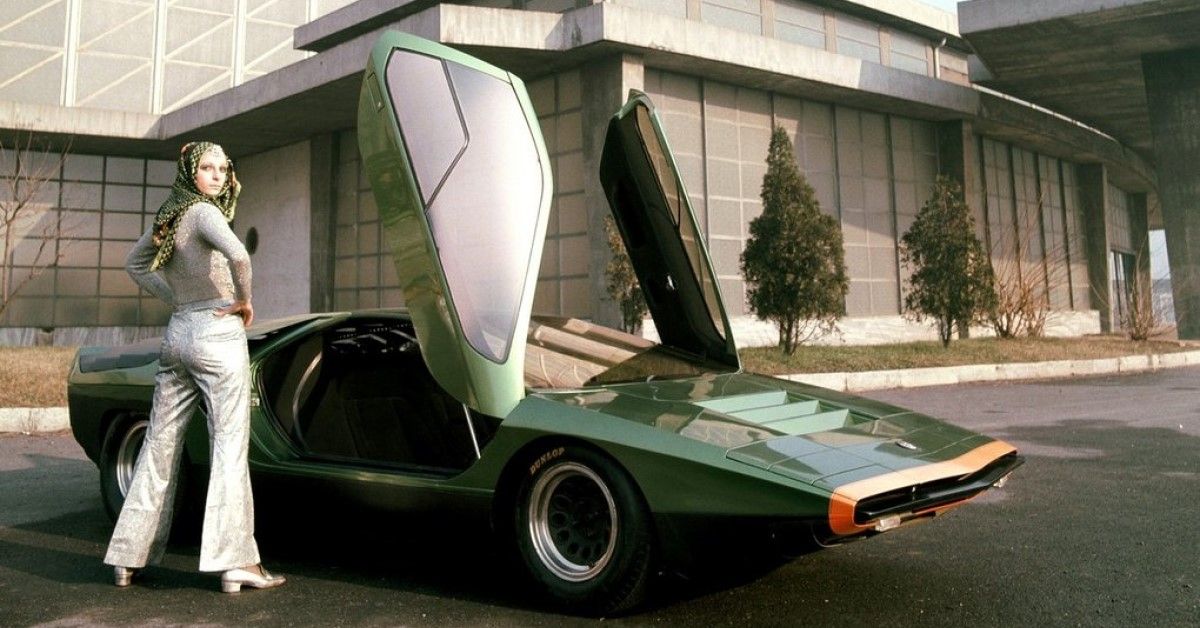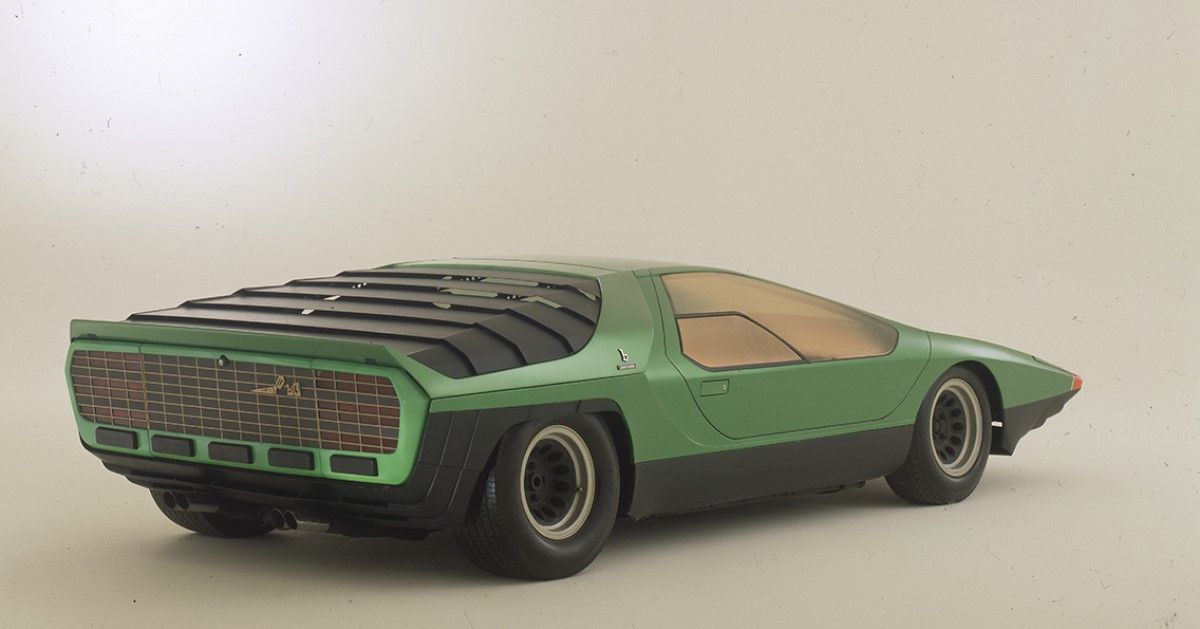Let's say that you want to design a supercar today. The basic design credentials would be a low-slung design, sharp bodylines, chunky tires, and cool scissor doors for the added drama. That is exactly what Marcello Gandini was up to 50 years ago! The Alfa Romeo Carabo disrupted the generic notions of automotive design.
Up until the 1960s, cars were characterized by smooth flowing curves. But it was with the Carabo in 1968, that the era of wedges began. This was the first 'sharpest' wedge design made possible by Gandini under Bertone. We stress on sharpest because just a year ago in 1967, the one-off Lamborghini Marazal was shown to the world.
This was also a bold new wedge design statement, but surely not as sharp as the Alfa came out to be! Even the outrageous-looking Lamborghini Miura was mellow in front of this green Italian entity. But the most surprising feat with the Alfa Romeo Carabo was it being a fully functional car. This wasn't a common thing among concept cars which were made for publicity and design projects at the time.
Alfa Romeo Carabo is the reason why Lamborghini's look cool with scissor doors.
Gandini's Wedge-Obsession Started With The Carabo
Marcello Gandini is known for designing some of the most iconic and game-changing cars in the automobile industry. And it was with the Alfa Romeo Carabo that his obsession with wedges began. Up until the early 1960s, sports cars were all characterized by smooth flowing lines, be it the Toyota 2000GT or even the Alfa Romeo 33 Stradale on which this concept is based. But in the late 1960s, car designs were taking the bold route, thanks to Gandini.
But briefly, before the Carabo came out, Gandini had explored the wedge route with the one-off Lamborghini Marzal which was also made by Bertone. But compared to the Carabo, the sharpness on the Marazal was mellow! The Carabo greatly inspired many of Gandini's creations it like the De Tomaso Pantera, Maserati Khamsin, and the sensual Lamborghini Countach (which also adapted a timeless design feature from this Alfa).
An Alfa Romeo 33 Stradale That Decided To Go 'Sharp'
The Carabo started its life as an equally exotic Alfa Romeo 33 Stradale, more specifically it was built on chassis No. 750.33.109. The 33 Stradale is one of the most beautiful Italian cars ever made and fiddling with it was quite a bold move. But this shared bit helped Gandini built a fully functioning prototype, which was quite uncommon at the time.
The Carabo also shared Stradale's 2.0-liter V8 motor that pumped out 227 HP and 152 lb-ft of torque. These figures looked quite pale for a V8 but it was fairly normal for its time. But the highlight was its all-aluminum race-bred construction which made it notably light and also allowed it to scream up to an impressive 9,000 RPM.
The Stradale could do 0-60 MPH in less than 6 seconds and had a top speed of 160 MPH. With the aerodynamically aggressive design language here, we believe that the Carabo could have shaved a bit more on its speed runs. It was coupled to a 6-Speed manual that sent power to the rear wheels. A bold new industry-defining design language complete with a fully-functioning powertrain was in itself a highlighting feat.
The First Car With Scissor Doors Was Named After A Beetle
The Alfa Romeo Carabo was sadly not given the green light despite being a convincing and fully functional prototype. But one key design aspect that we mentioned earlier paved the way for a supercar to be called 'cooler'. It was the scissor doors. All thanks to the Carabo, Lamborghini was able to make an exotic name for itself by adopting the scissor doors. Later on, the scissor doors spread like wildfire through the supercar scene as it helps add 1000% more coolness to a car.
As for the name - 'Carabo' was derived from the word Carabus Auratus which is the scientific name for the golden ground beetle. The car was painted to mimic the beetle with iridescent green and golden accents. The tiny orange part at the tip of its front wedge portrayed the beetle's legs and antenna. Alfa Romeo Carabo made quite the connection with the beetle in aesthetics!
A Laid-Back, Blacked-Out Interior With Lots Of Round Dials
The Carabo's interior was neither as color-intense as its exterior nor was it synonymous to the sharpness on the outside. But Alfa Romeo went for a rather minimal and monotone interior layout. It was one of the most laid-back setups of the time. The dashboard design was peculiar with a lot of tabletop space available. The dash was boxy in design and was filled with individual circular dials (there were quite a lot of them!). The all-black layout created a sense of seriousness but the standout feature was its cool deep-disc steering wheel.
The 'Wedge' Father Of All Modern Supercars
If not for the Alfa Romeo Carabo, we would be still driving around curvaceous supercars and hypercars, in the worst-case scenario. The Carabo introduced us to wedges and outlandishly low form factors which is still a cool factor among performance machines. Gandini's creations after the Carabo including the iconic Lancia Stratos and Ferrari 308 GT4 showed us his unconditional love for wedges.
The Carabo managed to convince a whole industry into taking the wedge route, all thanks to the mighty Gandini. Interestingly, the past has caught up to us, and in our wildest dreams, we hope for Alfa Romeo to revive their game-changing Carabo as an EV and remind the exotic bunch of their success mantra.
Sources: Wikipedia.org, Autoevolution.com, Topgear.com, Caranddriver.com

